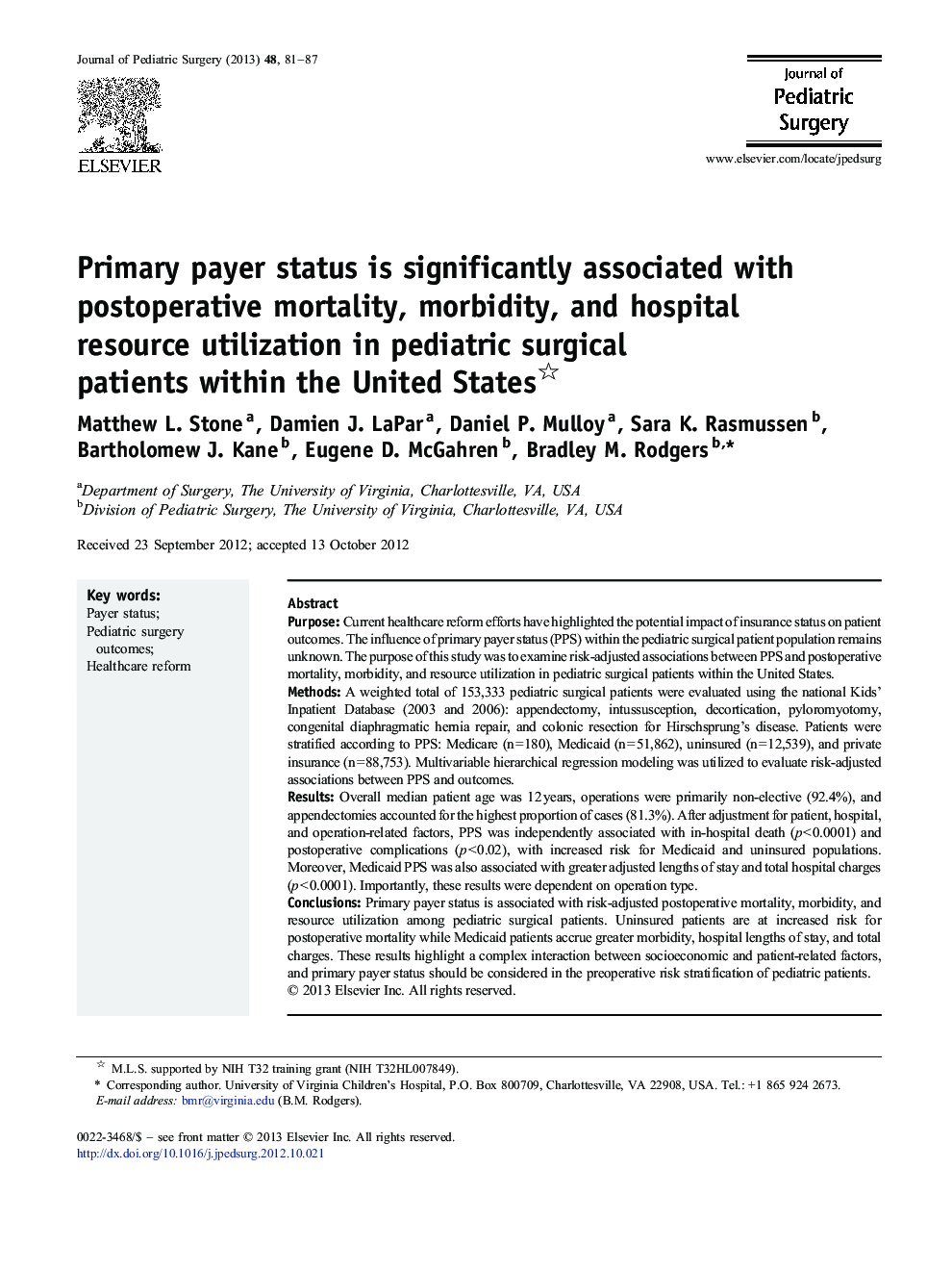| کد مقاله | کد نشریه | سال انتشار | مقاله انگلیسی | نسخه تمام متن |
|---|---|---|---|---|
| 4156319 | 1273771 | 2013 | 7 صفحه PDF | دانلود رایگان |

PurposeCurrent healthcare reform efforts have highlighted the potential impact of insurance status on patient outcomes. The influence of primary payer status (PPS) within the pediatric surgical patient population remains unknown. The purpose of this study was to examine risk-adjusted associations between PPS and postoperative mortality, morbidity, and resource utilization in pediatric surgical patients within the United States.MethodsA weighted total of 153,333 pediatric surgical patients were evaluated using the national Kids' Inpatient Database (2003 and 2006): appendectomy, intussusception, decortication, pyloromyotomy, congenital diaphragmatic hernia repair, and colonic resection for Hirschsprung's disease. Patients were stratified according to PPS: Medicare (n = 180), Medicaid (n = 51,862), uninsured (n = 12,539), and private insurance (n = 88,753). Multivariable hierarchical regression modeling was utilized to evaluate risk-adjusted associations between PPS and outcomes.ResultsOverall median patient age was 12 years, operations were primarily non-elective (92.4%), and appendectomies accounted for the highest proportion of cases (81.3%). After adjustment for patient, hospital, and operation-related factors, PPS was independently associated with in-hospital death (p < 0.0001) and postoperative complications (p < 0.02), with increased risk for Medicaid and uninsured populations. Moreover, Medicaid PPS was also associated with greater adjusted lengths of stay and total hospital charges (p < 0.0001). Importantly, these results were dependent on operation type.ConclusionsPrimary payer status is associated with risk-adjusted postoperative mortality, morbidity, and resource utilization among pediatric surgical patients. Uninsured patients are at increased risk for postoperative mortality while Medicaid patients accrue greater morbidity, hospital lengths of stay, and total charges. These results highlight a complex interaction between socioeconomic and patient-related factors, and primary payer status should be considered in the preoperative risk stratification of pediatric patients.
Journal: Journal of Pediatric Surgery - Volume 48, Issue 1, January 2013, Pages 81–87